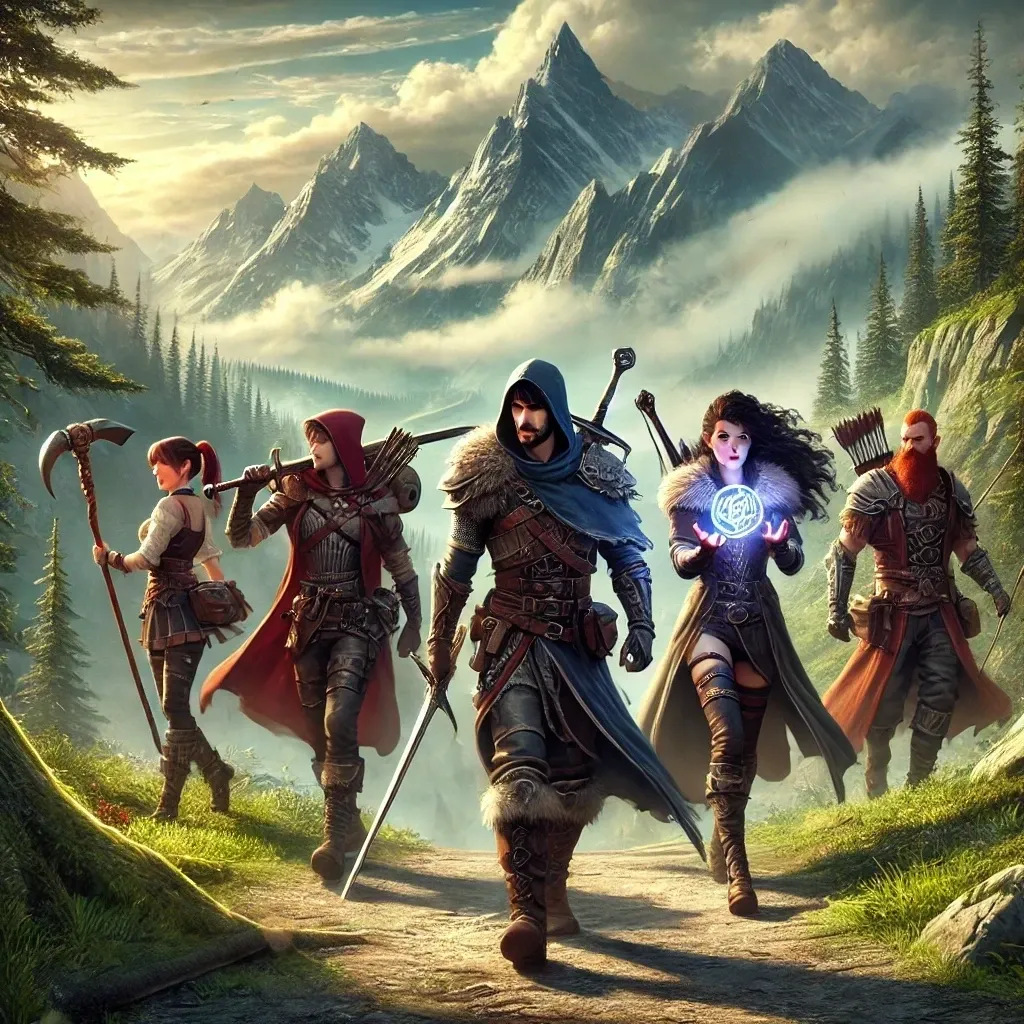Recent Posts
In this daily reflection post, I share both the challenges and bright moments of my day. Despite dealing with chronic pain, late starts, and worried moments about my four-year-old's health, I found joy in unexpected places - like a rare "I love you" from my teenager and some meaningful progress with my work. I'm learning to acknowledge both the ups and downs, celebrating small victories like managing to eat a bit more than usual. This kind of honest daily check-in helps me stay grounded and might become a regular feature of my blog.
I break down the key differences between illustrative and non-illustrative scenes in writing, providing clear guidelines for strengthening character portrayal. Strong scenes challenge characters, show deliberate choices, and reveal new aspects of their personality in different environments. I've created a practical exercise with specific prompts about setting, conflict, character agendas, and emotional arcs to help evaluate and improve scene effectiveness. By focusing on showing rather than telling and ensuring each scene reveals something new about our characters, we can create more engaging and dynamic narratives.
I've crafted this detailed outline for creating a visceral body horror narrative, following a detective's descent into darkness while hunting a deranged killer. Each beat progressively intensifies the horror and psychological tension, from the initial shocking discovery through to the final confrontation. The structure weaves together elements of police procedural and psychological thriller with graphic body horror, building toward a haunting conclusion that leaves lasting scars on both the characters and reader.
While standing on the shoulders of writing giants like Mark Tufo, Stephen King, and Craig DiLouie, I'm sharing my own experiences and insights in hopes they'll connect with fellow writers in meaningful ways. Though the advice I offer may not be revolutionary, sometimes timing is everything - perhaps these words will reach you exactly when you need them. If this blog helps nurture your writing journey or gives you a fresh perspective, even in small ways, I'll consider that a profound success.
I've outlined my personal approach to structuring romance novels, breaking down both the three-act framework and the detailed beats that build a compelling love story. From the initial meet-cute through to the happily ever after, each stage carefully balances character growth with relationship development. While popular frameworks like Romancing the Beat work for many writers, I've found this structure helps craft authentic romantic arcs that feel both emotionally satisfying and naturally paced.
I've compiled my comprehensive list of writing essentials, from hardware to software that I use daily. My toolkit starts with a Macbook Pro and includes a mix of traditional writing tools like Scrivener and innovative AI assistants like ChatGPT, Claude, and Sudowrite. I rely on multiple organizational tools including Logseq, Notion, and specialized writing software like NovelCrafter and Dramatica Story Expert. While some might question certain choices (especially the AI tools), each serves a specific purpose in my writing process. I've included direct links to help you explore these tools yourself.
I'm planning an ambitious daily content schedule covering everything from writing exercises and story beats to software reviews and craft workshops. My goal is to share 5-10 posts daily, including outlines, writing prompts, system reviews, and glimpses into my own writing process. Each type of content serves a specific purpose in helping fellow writers develop their craft. While some posts may appear multiple times daily, others like the "Day in the Life" and software reviews will be once-daily features. I welcome suggestions for specific topics through email.
I explore how mob mentality can be reimagined beyond traditional zombie narratives, appearing as anything from social media swarms to sports fanatics. By examining different aspects of mob dynamics - from their inherent weaknesses to potential "cures" for collective madness - I provide a framework for writers to create compelling crowd-based conflicts. Through exercises focused on developing expert characters, exploring survivor strategies, understanding mob leadership, and establishing personal connections within the mob, I demonstrate how these elements can add depth to stories about mass movements and collective behavior.
I've created an exercise exploring how heart-to-heart conversations can reveal deeper character motivations and relationships, particularly between protagonists and antagonists. While these intimate dialogues might not all make it into the final story, they're valuable tools for understanding what drives your characters. Through exploring potential confidants, safe locations for honest discussions, and examining how these conversations might shift power dynamics or trigger personal growth, we can uncover new plot complications and character insights. The exercise includes specific prompts to help craft these revealing dialogue scenes.
Starting this blog was inspired by my desire to help fellow writers avoid unnecessary expenses on their publishing journey. With my husband's support in teaching me website management, I'm creating a space to review writing systems and courses. My goal is to help new authors make informed decisions about where to invest their money, saving their resources for what really matters - getting their work published. Think of this as your guide to navigating the writing industry without breaking the bank.
I explore the concept of a Care Parcel - a pre-existing relationship that defines and humanizes the protagonist. This storytelling element serves multiple purposes, it helps readers connect emotionally with the main character, reveals their flaws, and establishes what they're willing to fight for. Importantly, I emphasize that this relationship must exist before the story begins to create authentic emotional stakes.
This "Plot Machine" is a detailed roadmap for crafting compelling narratives, breaking down each crucial story beat from the opening world-building through to the final glimpses of what lies ahead. Each stage carefully builds upon the last, guiding characters through their transformation - from their initial choice through darkness and temptation, up to clarity and growth. While the framework is comprehensive, it's flexible enough to adapt to any genre while maintaining the emotional core of your story's journey.
I've designed this outline to help craft compelling alternate history narratives that explore how pivotal moments of change can reshape our world. The structure guides you through building a richly detailed alternate timeline while following your protagonist's journey of discovery within it. Each beat carefully balances worldbuilding with character development, from the initial shock of displacement to the final reflection on how choices shape history.
I explore how taking characters out of their comfort zones can drive powerful character development and story progression. Whether it's a Viking landing in Australia or a character making a difficult call home, these shifts in environment create opportunities for growth and transformation. Through exercises examining past travels, potential escape routes, and new challenging settings, I demonstrate how location changes can be more than just scenery - they're catalysts for character evolution. By considering both physical and emotional challenges in new environments, along with the impact of supporting characters, we can create more dynamic and engaging story arcs.
I've structured this outline to explore the devastating impact of a child's disappearance through multiple perspectives - the anguished parents, the haunted detective, and the fractured community. Each act carefully builds tension while delving into the psychological toll on all involved, from the initial vanishing through to the lasting aftermath. The framework balances the investigative elements with deep emotional resonance, guiding writers through crafting both the external search and the internal struggles that persist even after resolution.
I explain Retroactive Continuity (RetCon) - the practice of adding or reframing past events to serve current plot needs. Using the example of a suddenly-existing space elevator, I describe how RetCons differ from planned reveals. While the best RetCons smoothly integrate into existing narrative without contradictions, I express my personal dislike for this storytelling device, even when it's used to clarify previous plot points.
I've broken down Campbell's archetypal narrative pattern into its essential stages, from the protagonist's ordinary existence through their transformative journey and ultimate return. Each stage is carefully structured to show both external challenges and internal growth, mapping out how characters evolve from reluctant heroes to transformed individuals. While this framework is rooted in ancient mythology, I've detailed how it remains relevant for modern storytelling across all genres, providing a proven template for crafting compelling character arcs and meaningful transformations.
I explore why AI isn't the main threat to writers today – instead, it's the overwhelming number of authors competing for limited attention. While my own novels remain unpublished, I've identified an opportunity in helping other writers achieve their publishing goals through digital content and courses. Rather than viewing this as giving up on fiction, I see it as a path that could eventually enable both my writing and teaching aspirations.




